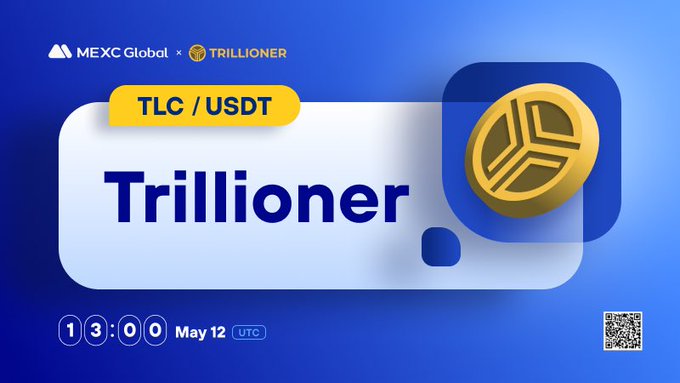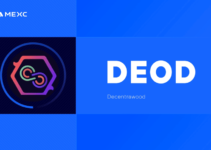
TL;DR
1) Brevis is a zero-knowledge proof–based full-chain data platform that enables dApps to securely and trustlessly access and compute on historical on-chain data across multiple chains.
2) It solves one of Web3’s core limitations, i.e., the inability of smart contracts to access historical and cross-chain data, by giving them “memory” and “computational power.”
3) Core components include Pico zkVM, zkCoprocessor, and an incentive layer called Incentra, forming a complete decentralized computation and verification framework.
4) Brevis is already being applied in DeFi, identity, and social use cases, accelerating the development of data-driven Web3 applications.
5) Backed by leading investors and integrated with major ecosystem partners, Brevis is rapidly positioning itself as a critical data engine within the Web3 infrastructure stack.
As blockchain evolves in a multi-chain world, interoperability, data privacy, and verifiability remain major hurdles. Brevis offers a next-generation solution through zero-knowledge proofs and a modular, real-world–ready architecture, bridging a crucial gap in Web3 development.
1. What is Brevis
Brevis is a zero-knowledge (ZK) full-chain data proving platform that enables dApps to access, compute, and utilize arbitrary data across multiple blockchains in a fully trustless way. It unlocks a wide range of use cases including data-driven DeFi, zkBridges, on-chain user acquisition, zkDID, and social account abstraction.
In November 2024, Brevis announced the completion of a $7.5 million seed funding round, co-led by YZi Labs and Polychain Capital, with participation from IOSG Ventures, Nomad Capital, Bankless Ventures, HashKey Capital, and other notable investors. The strong backing from top-tier capital reflects both confidence in Brevis’s technical architecture and its long-term market potential.

2. Brevis’s Vision
Today, smart contracts in Web3 dApps can only directly access the current on-chain state. They lack access to rich historical data, cross-chain data, and complex on-chain events, severely limiting the capabilities of decentralized applications. As a result:
- It’s difficult to implement sophisticated incentive mechanisms (e.g., rewards based on user history)
- On-chain identity, reputation systems, and social graphs are hard to realize
- Cross-chain assets, events, and state changes are challenging to interoperate securely
Brevis envisions becoming a zero-knowledge full-chain data computation and verification platform. It aims to enable dApps to securely, reliably, and automatically access and compute arbitrary data across multiple blockchains, including asset transfers, contract calls, events, and state roots, bringing “data intelligence” and “cross-chain capability” into the core of Web3 applications.
3. Brevis Product Components
3.1 Pico zkVM
Pico is an open-source zero-knowledge virtual machine (zkVM) that introduces an innovative “glue and coprocessor” architecture. It combines the performance of purpose-built circuits with the flexibility of general-purpose zkVMs, redefining how secure, scalable, and high-performance decentralized applications are developed. It enables developers to build custom proof systems tailored to the diverse needs of modern cryptographic applications.
Key technical features:
- Operates without relying on centralized nodes or data services, ensuring data integrity and verifiability.
- Currently supports Ethereum L1 and L2, with plans to expand to additional chains.
- Modular design compatible with multiple consensus mechanisms (e.g., PoS) and block structures.
3.2 zkCoprocessor
The zkCoprocessor is a computation outsourcing module for smart contracts, designed to handle historical on-chain data analysis, state queries, and complex logic verification.
Key advantages:
- Enables developers to submit on-chain state query requests. Brevis then generates zero-knowledge proofs to ensure the correctness of the returned data.
- Widely applicable across various dApps, including DeFi risk assessment, on-chain reputation systems, and cross-chain verification.
Trustless and permissionless: Anyone can act as a prover to generate ZK proofs for computation tasks, no permission required, and the results remain cryptographically trustworthy.
3.3 Incentra
Incentra is a decentralized incentive distribution platform powered by the Brevis zkCoprocessor. It is designed to securely and trustlessly connect DeFi protocols with liquidity providers and users. By incentivizing behaviors such as liquidity provision, token holding, and protocol interaction, Incentra helps protocols increase TVL, drive user engagement, and accelerate ecosystem growth.
Design highlights:
- Tasks are decomposed and distributed among multiple participants.
- Combines off-chain aggregation with on-chain verification to maximize efficiency.
- Includes a built-in incentive mechanism to ensure network security and efficient task execution.
Supported task types include: single-step tasks, multi-step computations, and aggregated proof generation, among others.

4. Core Advantages of Brevis
1) High Performance: Brevis leverages advanced zero-knowledge cryptography and parallel computation to efficiently process large-scale, complex data, crucial for dApps that require fast response times.
2) Powerful Developer Toolkit: Brevis provides an easy-to-use SDK that supports multiple mainstream programming languages. Developers can flexibly access historical states, transactions, and contract events, and define custom computation logic.
3) Full-Chain Compatibility: Supports unified access to and computation on data from multiple chains, enabling developers to build seamless cross-chain applications with a smooth user experience.
4) Low Trust Assumptions: All data access, computation, and verification are secured by zero-knowledge proofs, removing the need to trust third parties and significantly enhancing the security and scalability of Web3 applications.
5. Brevis Use Cases
1) Data-Driven DeFi Incentives: Brevis enables real-time access to and verification of historical user behavior, making it possible to implement loyalty rewards, dynamic fee structures, and governance mechanisms based on on-chain activity.
2) zkBridges (Zero-Knowledge Cross-Chain Bridges): Brevis uses zero-knowledge proofs to secure asset and data transfers across blockchains, enhancing the security and efficiency of cross-chain communication.
3) zkDID (Zero-Knowledge Decentralized Identity Systems): Enables proof of identity and behavior without revealing private data. Ideal for use cases in on-chain social networks, financial services, and decentralized reputation systems.
4) Complex Data Analysis and Cross-Chain Oracles: Supports multi-chain data analytics and oracle construction, powering advanced use cases across DeFi, social platforms, gaming, and beyond.
6. Brevis Ecosystem Partners
6.1 Ecosystem Projects and Real-World Use Cases
Brevis has established deep collaborations with leading projects across DeFi, NFTs, social platforms, and data services. Notable examples include:
1) QuickSwap: Integrated Brevis to implement a dynamic fee mechanism, enhancing AMM liquidity and protocol revenue.
2) PancakeSwap: Adopted Brevis to deliver a more intelligent trading experience, improving user retention and protocol activity.
3) Usual Money: Leveraged Brevis to power ZK-based reward distribution and income sharing.
4) Beraborrow: Uses Brevis to support ongoing protocol incentives, fueling ecosystem growth.

6.2 Ecosystem Partners and Node Operators
Brevis’s decentralized coprocessor network has attracted participation from several well-known node operators, including Staketab, Ankr, CoinSummer, Luganodes, 01node, and Finoa Consensus Services. Together, they help ensure the security, stability, and high availability of the Brevis coChain AVS mainnet.
7. Brevis’s Market Impact
- Strong funding and institutional backing: Backed by top-tier investors including YZi Labs and Polychain Capital, Brevis has earned strong recognition from the capital markets.
- Leading technical innovation: With unique architecture featuring multi-chain ZK data proofs, open query markets, and aggregated verification, Brevis is helping to set the direction for the industry.
- Robust ecosystem partnerships: Brevis has attracted a diverse set of node operators and leading projects, accelerating data interoperability and cross-chain collaboration across Web3.
As the data engine of Web3, Brevis is driving a new wave of blockchain infrastructure innovation through trustless design, strong privacy guarantees, high performance, and native cross-chain capabilities. Powered by its three core modules, zkFabric, zkQueryNet, and zkAggregatorRollup, Brevis enables secure, verifiable data flows across chains, opening up powerful new possibilities for DeFi, identity, social, and beyond.
Join MEXC and Get up to $10,000 Bonus!



